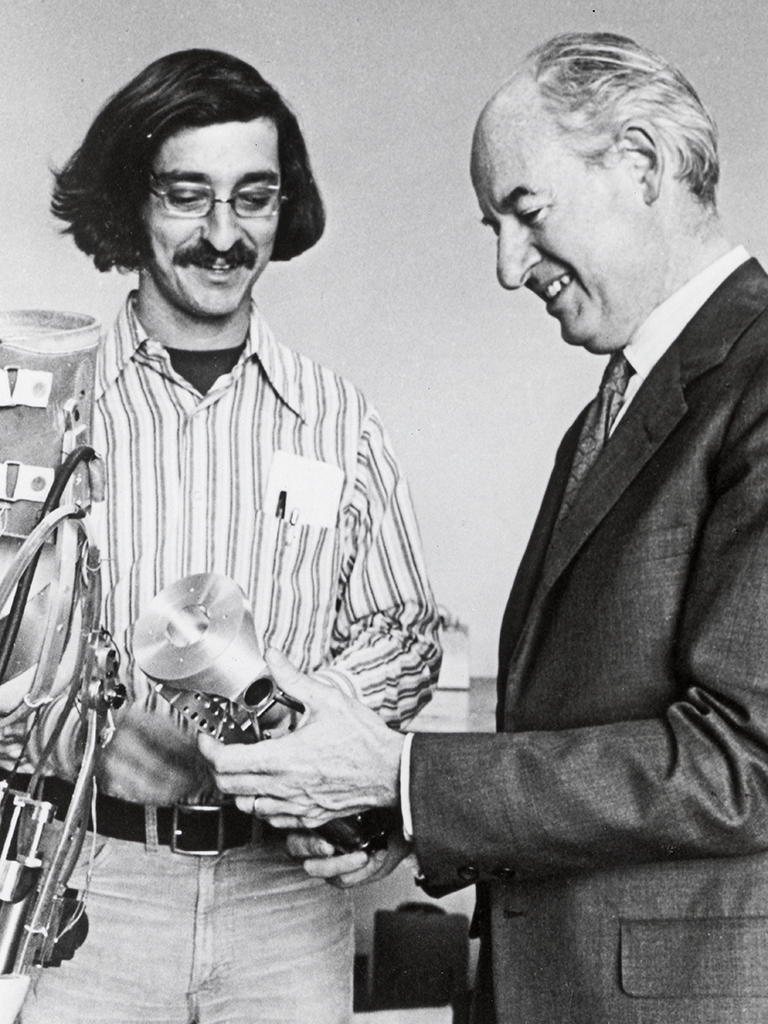Pioneering Pedagogy
Before Woodie Flowers, his advisor Robert Mann advocated a place for design in engineering education
Dr. Robert Mann, an engineer and former rocket scientist who developed the world’s first biomedical prosthetic device, was instrumental in turning design into a discipline. As engineering education shifted from an emphasis on mostly empirical to mostly theoretical, Mann advocated for balance and a place for design.
In the 1960s, Mann introduced project-oriented courses that involved students in the design process, transforming the design curriculum in mechanical engineering at MIT. He also wrote extensively about the importance of this effort. Woodie Flowers, one of Mann’s advisees, later took up the charge, using what Mann had outlined to inform the development of 2.70/2.007.
 Mann was involved in development of the Utah Elbow and the MIT Knee, shown here working with Flowers, who was then a graduate student. Credit: MIT Museum
Mann was involved in development of the Utah Elbow and the MIT Knee, shown here working with Flowers, who was then a graduate student. Credit: MIT Museum“My academic career of more than 50 years has been committed to involving undergraduate and graduate students in the engineering design process,” Mann wrote in a supplement published in 2002 by the Journal of Rehab R&D. “A variety of experiences—childhood model making, vocational high school education, draftsman jobs, and military assignments during World War II—have convinced me that one learns to design by being required to design.”
Mann joined the MIT faculty in 1953, serving as a professor of mechanical engineering for almost 40 years. Through the years, he also served as Whitaker Professor of Biomedical Engineering and as director of MIT’s Eric P. and Evelyn E. Newman Laboratory for Biomechanics and Human Rehabilitation from 1974 until his retirement in 1992.
During the 1950s, his research on internal power systems led to the development of Sparrow I and III and Hawk missiles. By the mid 1960s, his research was focused primarily on applying technology to human disabilities.
“At MIT, first as a research engineer and then as faculty, I mounted an unending search for appropriate topics to develop into engineering design goals as well as thesis topics for my students,” Mann wrote. “As part of that search, I became involved in rehabilitation engineering (RE)… [and] for my students, as well as for me, RE proved a winner! Students were challenged technically while working on projects that had real human significance—that indeed would ultimately improve the quality of life for thousands of people. The prospect of making such contributions attracted the best students to my research projects.”
Mann inaugurated the Sensory Aids Evaluation and Development Project in 1964, from which English-to-Braille computer translation systems, the awardwinning MIT Braille Embosser and electronic travel aids for the blind resulted. His Boston Arm was the first artificial limb to rely on a combination of biology and technology for its control.